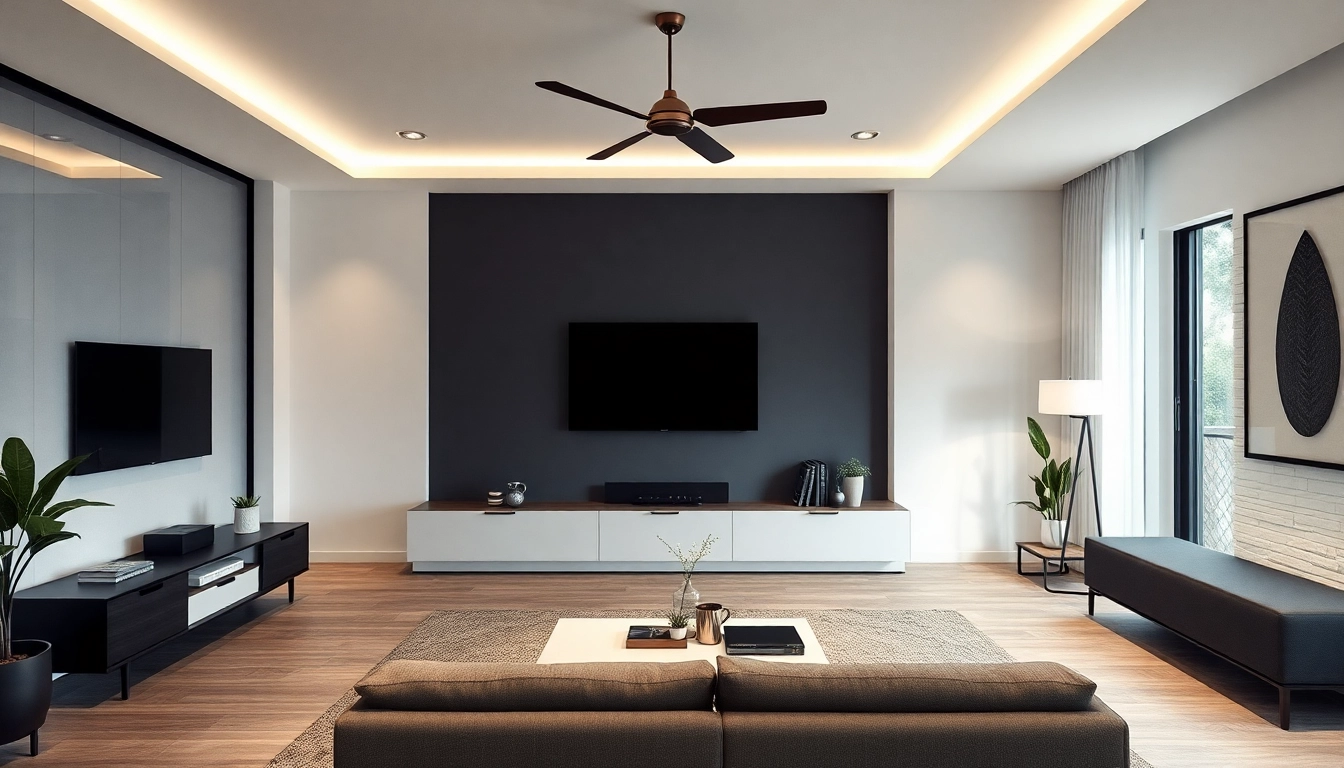Introduction to Electrical Panel Functionality
The Electrical Panel, often referred to as a breaker box or service panel, is a critical component of any residential or commercial electrical system. It serves as the central point where electricity is distributed throughout the building. Understanding its functionality is essential for homeowners and business owners alike, as it directly impacts both safety and efficiency. This article explores the fundamental aspects of electrical panels, signs for upgrades, choosing the right panel, installation and maintenance practices, and the financial implications of upgrading your electrical panel.
Definition of Electrical Panel
An electrical panel is an essential device located within buildings that divides electrical power into subsidiary circuits while providing a protective fuse or circuit breaker for each circuit in a common enclosure. Its primary function is to ensure safe and efficient distribution of electricity to various appliances and outlets within the structure. This pivotal component manages incoming voltage and ensures that circuits are not overloaded, which could lead to short circuits or electrical fires.
Basic Components of Electrical Panel
The main components of an electrical panel include:
- Bus Bars: These conduct electricity from the main supply line to the individual circuit breakers.
- Circuit Breakers: Safety devices that automatically cut off power when they detect an overload or short circuit.
- Main Disconnect Switch: A safety feature that allows you to shut off power to all circuits at once in case of an.
- Grounding Bus: A connection point for grounding conductors that helps prevent electrical shock.
The Role of Electrical Panel in Home Safety
Electrical panels play a crucial role in home safety. By providing circuit protection, they help prevent electrical overloads, which can cause damage to appliances or, worse, result in fires. Properly functioning breakers will trip when they sense an anomaly in current, acting as the first line of defense against electrical hazards. Moreover, an updated electrical panel can integrate modern safety technologies, such as AFCI (Arc Fault Circuit Interrupters) and GFCI (Ground Fault Circuit Interrupters), further enhancing safety.
Signs It’s Time to Upgrade Your Electrical Panel
Recognizing when it’s time to upgrade your electrical panel is vital for maintaining an efficient and safe electrical system. Several signs can indicate that your panel may need an upgrade.
Increased Power Demands
As households or businesses expand, their power requirements often increase. Typical modern homes have many electronic devices that demand higher wattage. If your electrical panel (typically rated at 100 or 200 amps) cannot meet these demands, it is time to consider an upgrade. Signs of insufficient power include flickering lights when multiple appliances are in use or the inability to run several devices simultaneously without circuits tripping.
Frequent Circuit Breaker Trips
If you find yourself frequently resetting circuit breakers, this is a clear indicator of an underlying problem. Circuit breakers are made to trip when they detect an overload. Frequent trips may also suggest a problem with the panel itself or that you have more appliances running than your current system can handle. An upgrade would be necessary to accommodate your electrical consumption and prevent potential hazards.
Older Electrical Systems
Homes built several decades ago may possess electrical systems that do not meet current safety codes. Older panels, especially those made of aluminum or with outdated technologies, may struggle to meet today’s electrical needs. If your home still has a fuse box, has an outdated electrical panel, or is using circuit breakers rated below 100 amps, an upgrade is needed for safety and efficiency.
Choosing the Right Electrical Panel for Your Needs
Selecting the correct electrical panel involves careful consideration of various factors to ensure that it meets your specific power needs and complies with local codes.
Assessing Power Capacity
The power capacity of the electrical panel is one of the most significant factors. Common residential panels have capacities of 100 amps, 200 amps, or even 400 amps for large homes or commercial spaces. Begin by assessing your power needs, considering all electronics, appliances, and future installations. A licensed electrician can conduct a load calculation to determine the appropriate capacity for your situation.
Types of Electrical Panels
There are several types of electrical panels to consider:
- Main Service Panels: These are the most common and manage the power supply to the entire building.
- Subpanels: Ideal for larger homes or specific areas that require dedicated circuit distribution, offering flexibility in power management.
- Smart Panels: Emerging technology that incorporates smart technology for remotely managing and monitoring energy usage and loads.
Consulting with a Professional
When it comes to selecting and installing an electrical panel, consulting with a qualified electrician is crucial. They will help evaluate your needs, suggest the best options for your home or business, and ensure proper installation according to local electrical codes. An electrical professional can also anticipate potential issues that may arise during installation and offer solutions that you might not consider on your own.
Installing and Maintaining Your Electrical Panel
Proper installation and maintenance of electrical panels are key to their performance and longevity. Following best practices during installation and establishing a maintenance schedule can save you time and money down the road.
Installation Best Practices
To install an electrical panel correctly, follow these best practices:
- Location: Install the panel in a dry, accessible area free from obstructions for ease of access during maintenance.
- Circuit Mapping: Clearly label each circuit’s purpose during installation to facilitate easy troubleshooting.
- Grounding: Ensure proper grounding methods are utilized to avoid electrical shock hazards.
Routine Maintenance Tips
Regular maintenance contributes significantly to the safety and efficiency of your electrical panel. Here are some tips:
- Inspect the panel periodically for signs of wear, rust, or heat damage.
- Ensure that connections are tight to prevent electrical resistance, which can cause overheating.
- Schedule periodic inspections with a qualified electrician, particularly if you increase your electrical load.
Signs of Wear and Tear
Be vigilant about the following signs that indicate your electrical panel may be aging:
- Burning smell or discolored circuit breakers suggesting overheating.
- Visible corrosion or rust on the panel enclosure or connections.
- Popping sounds or frequent trips of circuit breakers.
The Cost of Upgrading Your Electrical Panel
The financial aspect of upgrading your electrical panel is a significant consideration for homeowners and business owners. The cost encompasses several factors, including panel type, labor, local codes, and potential electrical repairs during installation.
Initial Expenses Involved
When planning an upgrade, budget for the following costs:
- Cost of the Panel: Depending on the capacity and type, electrical panels can range from $250 to $800.
- Installation Costs: Labor costs can range from $500 to $1,500 based on the complexity of the installation and local labor rates.
- Permitting Fees: Some regions require permits, which may add to your costs.
Long-term Savings from Upgrading
Investing in a new electrical panel can lead to long-term savings. Modern panels are designed for energy efficiency, potentially lowering your power bill. In addition, upgraded panels reduce the risk of electrical fires and malfunctions, which can save you from costly repairs or damages in the future.
Financing Options for Electrical Panel Replacement
For homeowners concerned about upfront costs, various financing options are often available, including:
- Home Equity Loans: Borrow against your home’s equity to finance improvements.
- Personal Loans: Option for smaller projects that require immediate funds.
- Local Government Programs: Some municipalities offer financing options or rebates for energy-efficient home improvements, including electrical panel upgrades.



